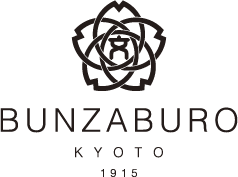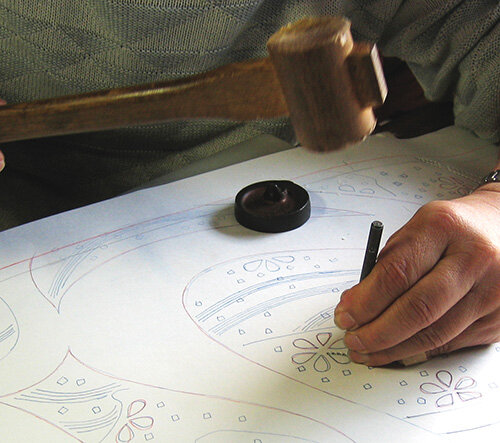What is Shibori?
Binding material to produce a pattern.
In principle, shibori tie-dye involves immersing cloth into a dye liquor to color it. Shibori’s delicate patterns are expressed by leaving certain areas in the original color, often referred to as “white”, undyed or resist dyed. In other words, the beauty of a competed shibori pattern will be decided by how to keep some parts “white.”
The most typical way to make the pattern leaving “white” is to bind the cloth with thread so that the dye liquor doesn’t reach certain parts. However, of course, this simple method alone is insufficient for creating the elaborate shibori patterns. During its long history, experienced and knowledgeable craftspeople contrived a variety of methods for creating different patterns.
There is a certain beauty only shibori tie-dye can depict that other fabric decoration methods such as painting and tracing cannot. Elaborate and honed shibori techniques have been devised over generations, and passed down to today.
Worksites from late 19c through mid 20c
The photos are from around 1925 and show scenes from the dyeing production for tegara or hair ribbons. Division of labor was - still is - the way in which work is performed, starting with the undercoating, transferring of design, binding, bleaching, dyeing, unbinding and steaming.
1. Design
Preliminary sketch of design transferred on to fabric.
2. Sewing
Fabric with thread sewn around the outlines of preliminary sketch of design.
3. Binding
Following the design markings with threads sewn, in turn, gather marked fabric into appropriate sized globs, and bind from the base to the tip with thread.
4. Dyeing
The fabric is dipped fully into dye liquor. Great care has to be taken to ensure the dye does not soak through undesired parts.
5. Unbinding
After dyeing, the binding threads are cut and removed. The undyed parts are left as white.
6. Complete
Shibori is complete after the shrunk cloth is steamed to remove unnecessary twists and creases.
BAI SHIBORI
Bai is a type of shellfish and this shibori is so named as its form looks like the shellfish. There are two different methods to make Bai Shibori: One is with an Ito-ire process (sewing) before binding with thread and the other is without Ito-ire.
TSUKIDASHI SHIBORI
Only the bottom of the gathered cloth is bound by thread. The pattern looks like the pattern on a fawn’s back.
ITAJIME SHIBORI
This is a technique where you fold a piece of fabric and then clamp it between wood blocks. The area that’s covered will remain undyed in the dyeing process.
MANMARU SHIBORI
This is a technique in which the fabric is rolled up and threads are applied randomly in the vertical and horizontal directions. The charm of this technique is the unpredictable patterns that are never the same on both sheets.
SEKKA SHIBORI
This is achieved by ITAJIME SHIBORI method, clamping cotton fabric between wood blocks before dyeing. Streaks and geometric patterns appear depending how you fold fabrics before clamping.
TESUJI SHIBORI
No sketch is taken for this pattern and it relies instead on the craftsperson’s sense for how the finished cloth will appear. Only an experienced craftsperson can achieve this technique, as it requires folding the cloth incredibly finely in order to create the elegant and finely striped patterns.
MOKU SHIBORI
The cloth is sewn following the sketch and keeping the sewn part undyed creates this elegant pattern. As the pattern looks like wood grain, which is called Mokume in Japanese, this pattern is named so.
HITTA SHIBORI
The pattern of this shibori technique is used to make the Kanoko Shibori or Fawn Pattern as it looks like the back of a fawn. Of all shibori techniques, Hitta Shibori has been claimed to be the most elegant and gorgeous since the Edo period (1603-1868). Since then, Hitta Shibori produced in Kyoto was honorary known as Kyo Kanoko Shibori and highly respected as the very best.
MIURA SHIBORI
The finished cloth with this shibori technique depicts a pattern of tiny dots. It directly reflects how the craftsperson treated the cloth in the binding process; thus, no individual pattern is the same.




















